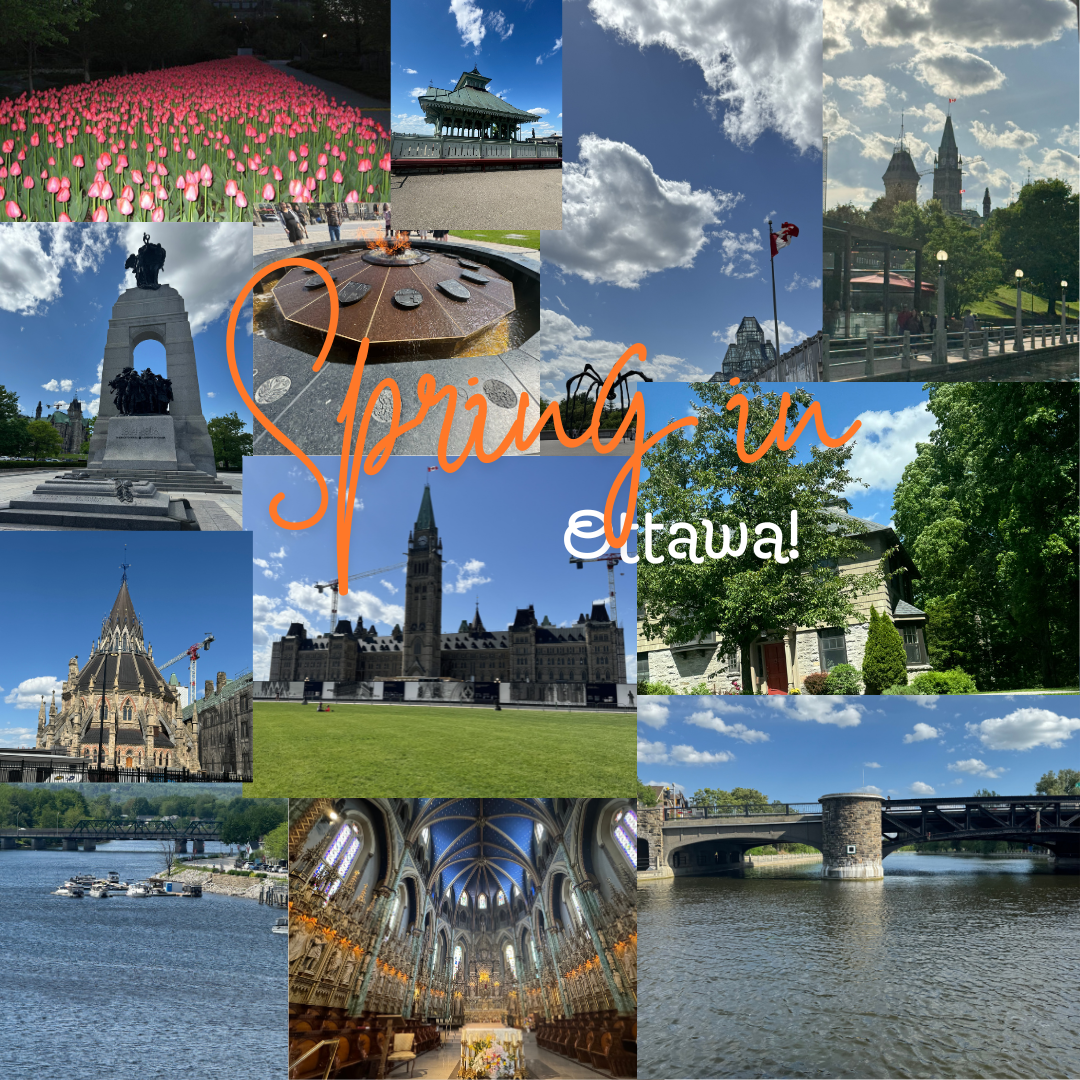In 2008, I experienced Spring in Ottawa for the first time. As a Master’s student at Carleton University, my days were primarily spent on campus, immersed in schoolwork. However, the serene nature, the sound of silence, and the breeze from the Rideau Canal left a lasting calming effect on me.
Now, sixteen years later, I find myself in Ottawa once again during springtime. This time, I explore the city with renewed excitement, building a bridge between my cherished memories and the present charm of Canada’s capital.
In the early afternoon, a tall young girl arrived in her red Toyota to meet me. She was my guide for the day, a second-generation immigrant whose parents had come to Canada from Cameroon. While pursuing her studies at the University of Ottawa, she worked as a tourist guide during the summer.
Within minutes, a bond formed between us as I saw a reflection of my younger self in her: hardworking university student and brimming with hopes and dreams for the future. As we drove through the city, she shared her experiences of moving from Montreal to Toronto to Ottawa during her childhood and teenage years. She spoke passionately about her love for living in Ottawa and her dream of serving in Canada’s armed forces after graduation.
With her stories setting the stage, our journey to explore the essence of Ottawa began.
1.The Notre-Dame Cathedral Basilica
Our first stop was a place of spirituality: The Notre-Dame Cathedral Basilica. This basilica, the oldest and largest church in Ottawa, serves as the seat of the city’s Roman Catholic archbishop. Its twin spires and gilded Madonna are easily identifiable from nearby Parliament Hill and the surrounding area. The blue ceiling and earthy-colored floor and interior create a replica of earth in a realm of prayer, evoking a sense of serenity and a deeper appreciation of the wonder of our planet on a more tangible level.
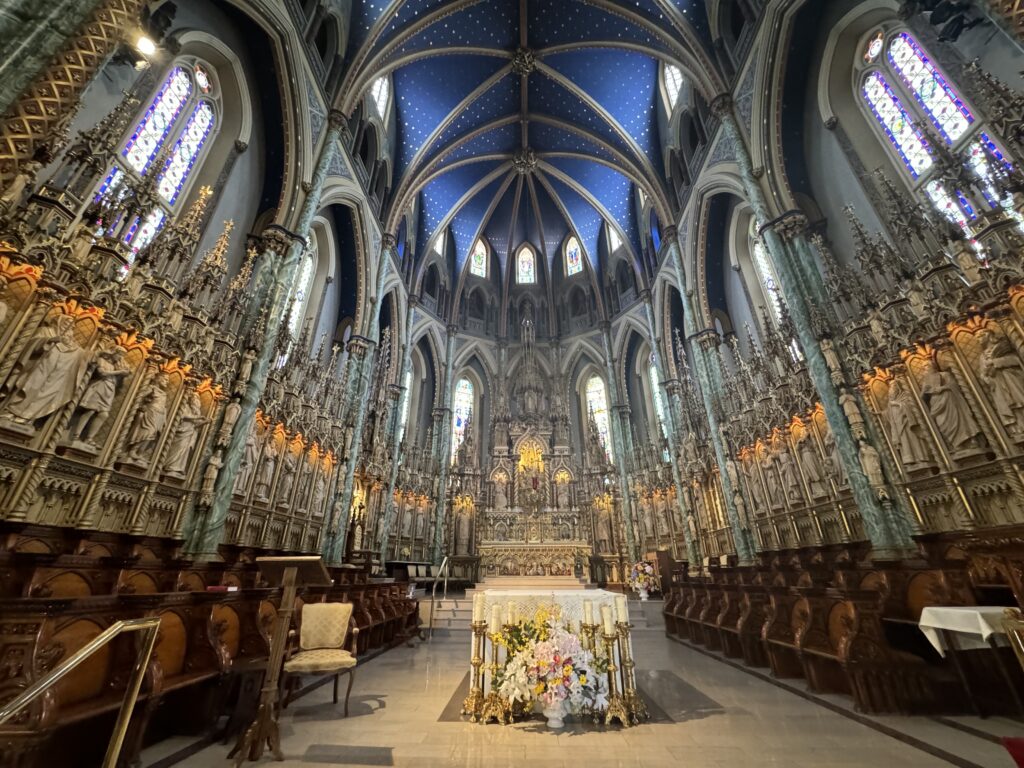
Regardless of whether you believe in religion or regularly practice it, the grandeur of the building, the soothing colors, intricate artwork, and the bridge between history, myth, and the collective memories of Christianity will intrigue you. It encourages a reconsideration of the power of spirituality in our lives, manifesting in many forms and shapes.
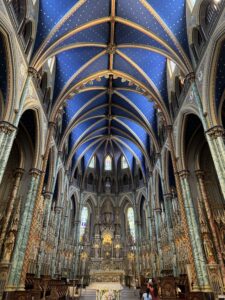
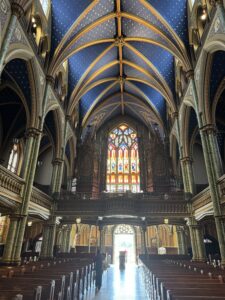
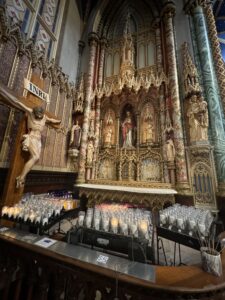

2. National Gallery of Canada
Just across from the Notre-Dame Cathedral Basilica, the National Gallery of Canada stands out with its modern architectural design and the striking presence of a giant spider sculpture in the front yard.
As a premier cultural institution, the National Gallery of Canada offers visitors profound insights into the nation’s rich history. It showcases a vast array of exhibitions that highlight both historical and contemporary Canadian art, with a special emphasis on Indigenous artworks and stories, underscoring their vital role in the nation’s heritage. The gallery also acknowledges the significant impact of migrant workers on Canada’s development through thought-provoking exhibits. Additionally, the gallery provides a variety of tours for school groups, communities, and families, fostering educational engagement, research opportunities, and cultural appreciation.
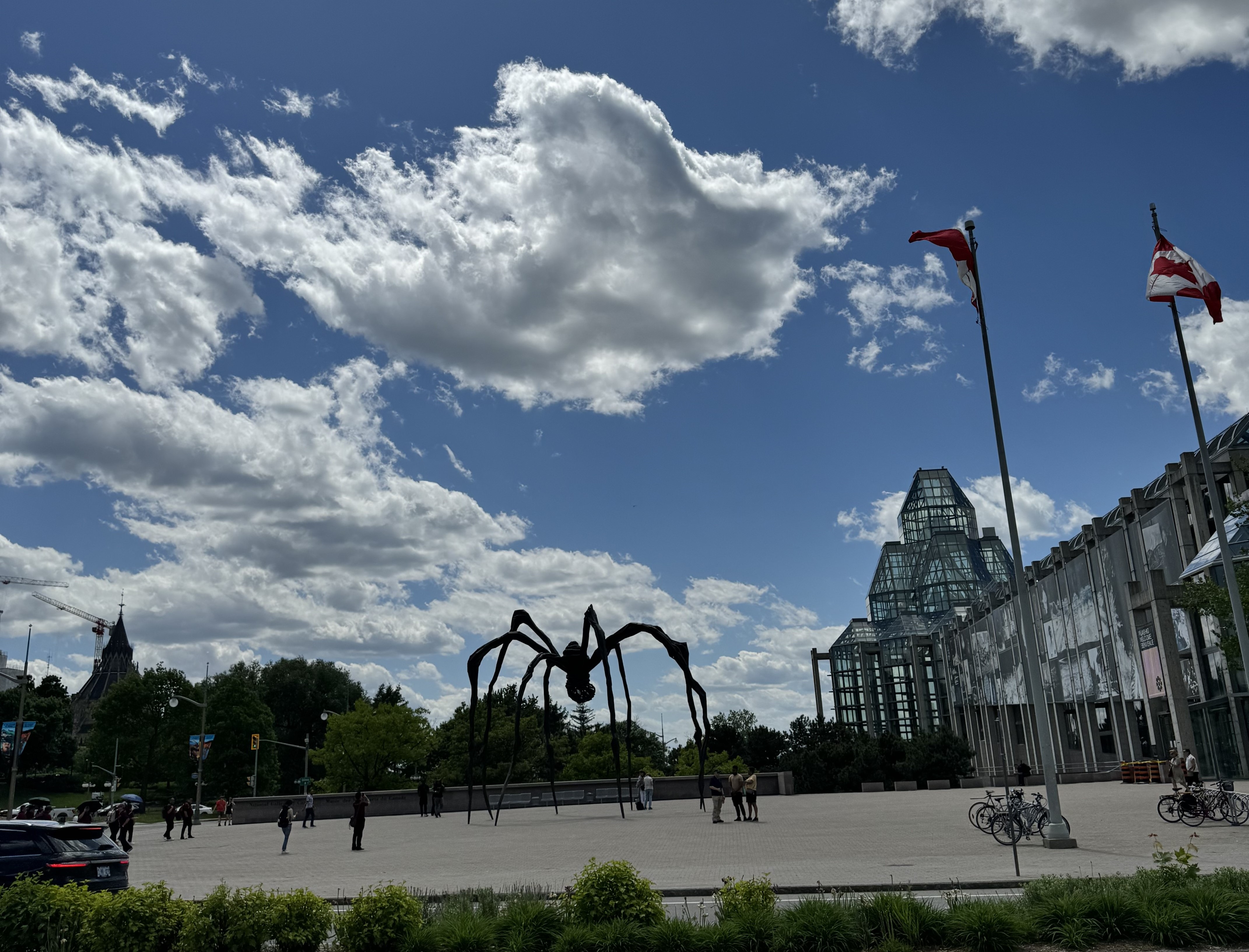
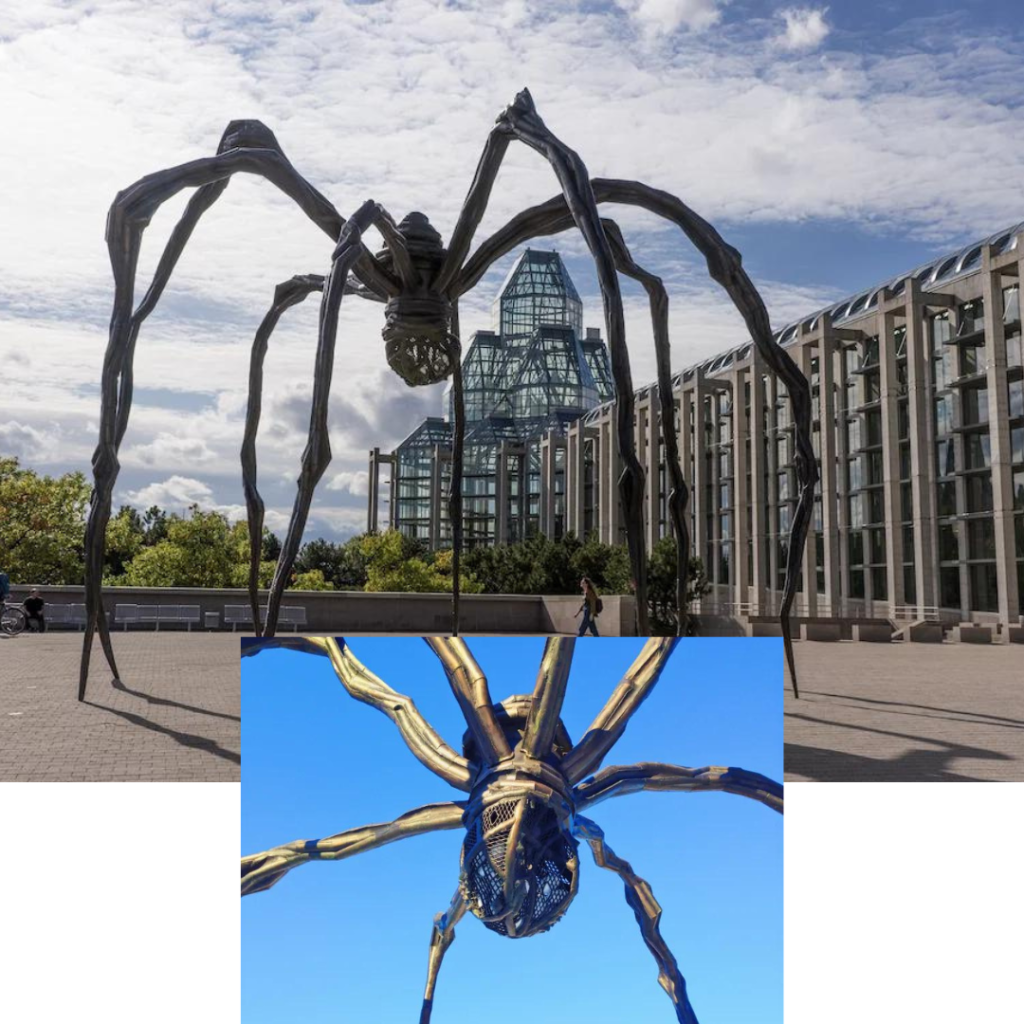
The main attraction is the Spider “Maman”, an imposing sculpture by artist Louise Bourgeois (1999), crafted from bronze, stainless steel, and marble, and displayed in several locations worldwide. Standing over 30 feet high and spanning more than 33 feet wide, it ranks among the largest sculptures globally. The title, “Maman,” is the affectionate French term for Mother, akin to Mummy or Mommy. Bourgeois created the sculpture in 1999 to honor her memories of her own mother. The spider features a sac containing 32 marble eggs, symbolizing the nurturing role of a mother and the profound bond she shares with her children.
3. Sussex Drive

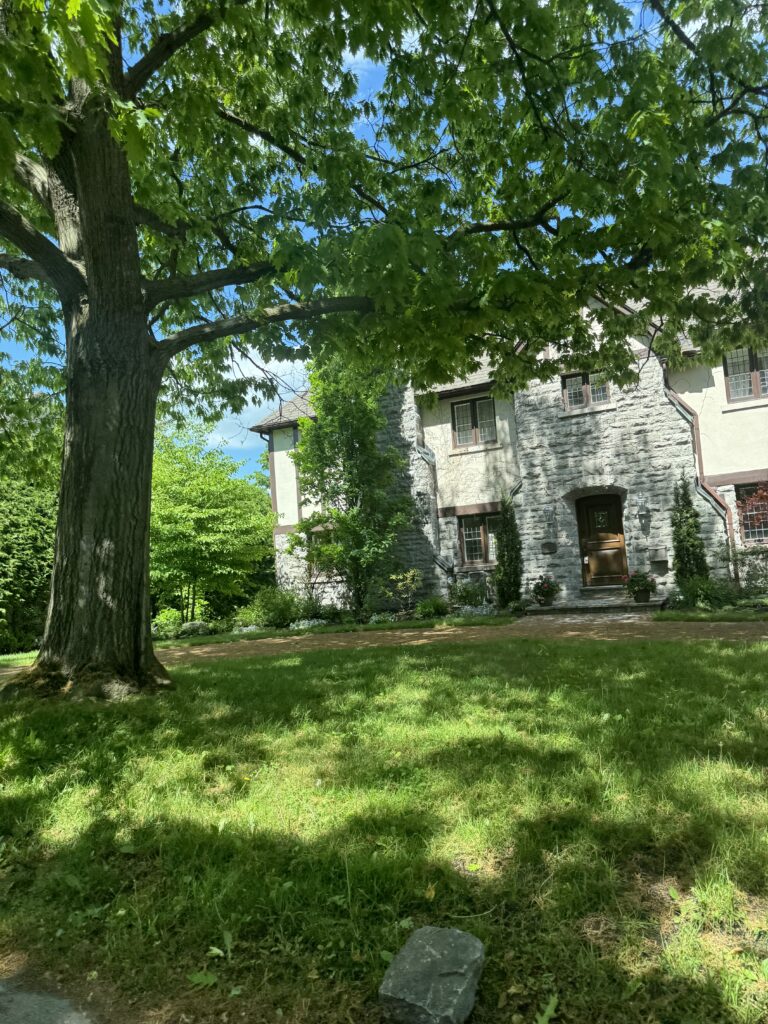

After immersing ourselves in the touching story of “Maman” and its depiction of maternal love, we continued our journey in the red car, driving along Sussex Drive. This prestigious area is home to high-level government officials, including the official residences of the Prime Minister of Canada and the Governor General. It also hosts numerous embassies, making it one of the most exclusive neighborhoods in the city. The elegant government buildings and well-manicured, green gardens highlight Ottawa’s identity as the national capital. The serene, beautifully organized houses and the tranquil atmosphere reflect the privilege and responsibility of those who govern the country.
As you pass along Sussex Drive, you’ll be captivated by the well-designed houses and the lush greenery on both sides. The intriguing absence of people lends an air of mystery to this picture-perfect neighborhood, making it seem like a beautifully crafted scene that awaits the return of its inhabitants.
4. Rockcliffe Lookout
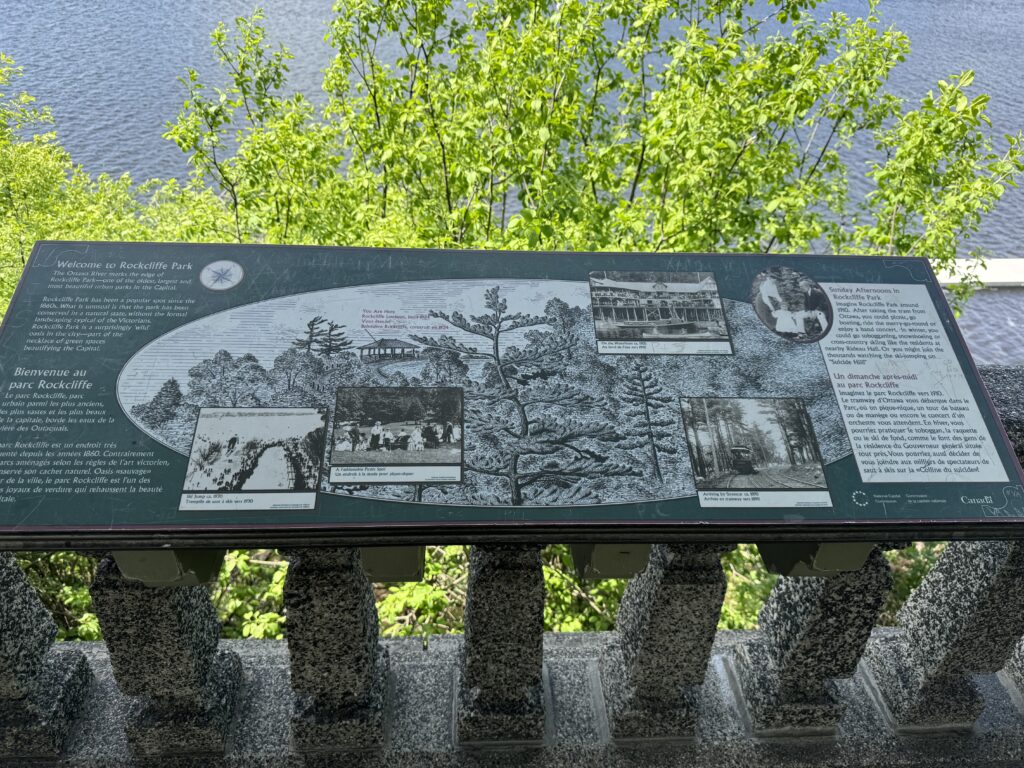
Leaving the scenic neighborhood behind, we headed toward Rockcliffe Lookout. From this vantage point, you can admire the vast beauty of the Ottawa River and the bridge that connects Ottawa and Gatineau, seamlessly bridging the provinces of Ontario and Quebec.
From Rockcliffe Lookout, the Ottawa River stretches out like a shimmering ribbon of blue, winding its way through the landscape with a serene, almost majestic grace. The water glistens in the sunlight, reflecting the sky and the surrounding greenery. Gentle ripples dance across its surface, creating a sense of peaceful motion.
The view is expansive, offering a panoramic glimpse of the river’s vastness. The air at the lookout is cool and fresh, infused with the subtle scent of water and foliage. The gentle rustling of leaves and the distant call of birds enhance the tranquility, making you feel at one with nature. Standing there, you can’t help but be enveloped by a sense of calm and wonder, as the Ottawa River unfolds its timeless beauty before your eyes.
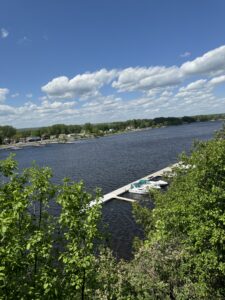
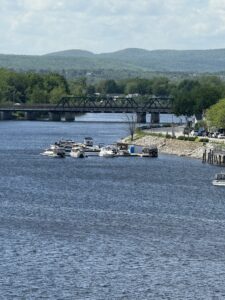
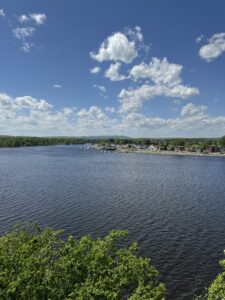
5. Canadian Museum of History
The Canadian Museum of History, located just across the Ottawa River in Gatineau, offers a profound exploration of Canadian cultural heritage. With its distinctive curving, flowery shape, the museum provides access to special exhibitions, the Children’s Museum, and films, all included with admission. Housing over 1,500 artifacts that span 15,000 years of history, the museum showcases the rich and diverse narratives that have shaped Canada. From ancient Indigenous artifacts to contemporary exhibits, it provides a comprehensive journey through time. The experience is both educational and captivating, allowing visitors of all ages to discover and appreciate the depth of Canada’s historical and cultural landscape.
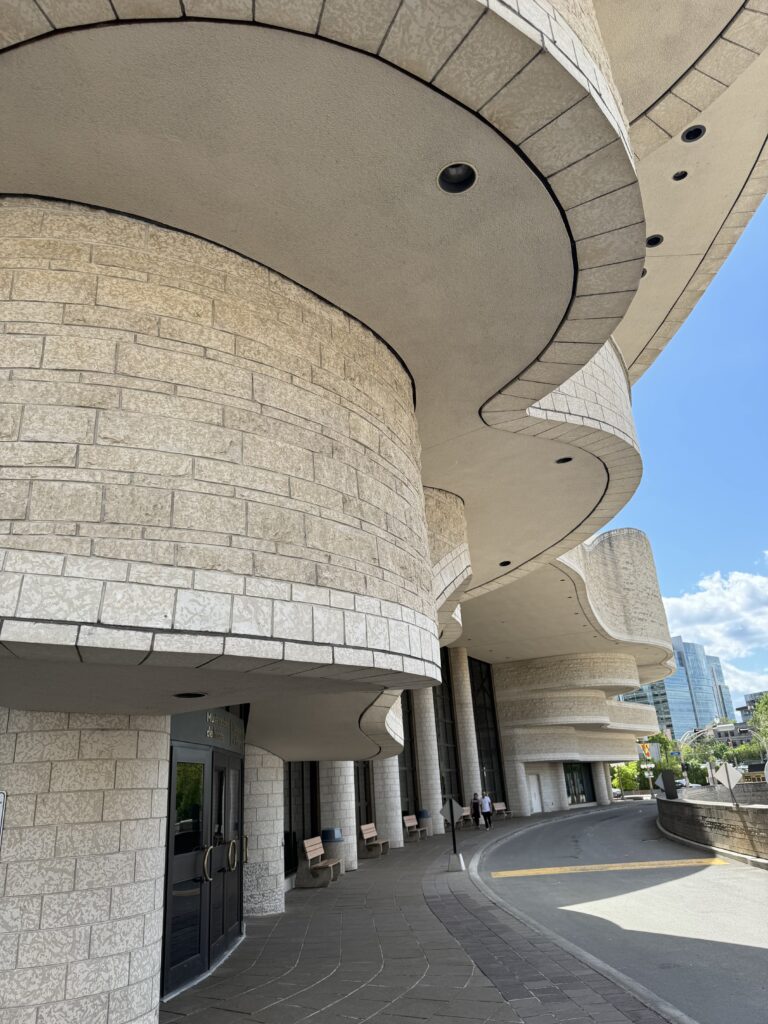
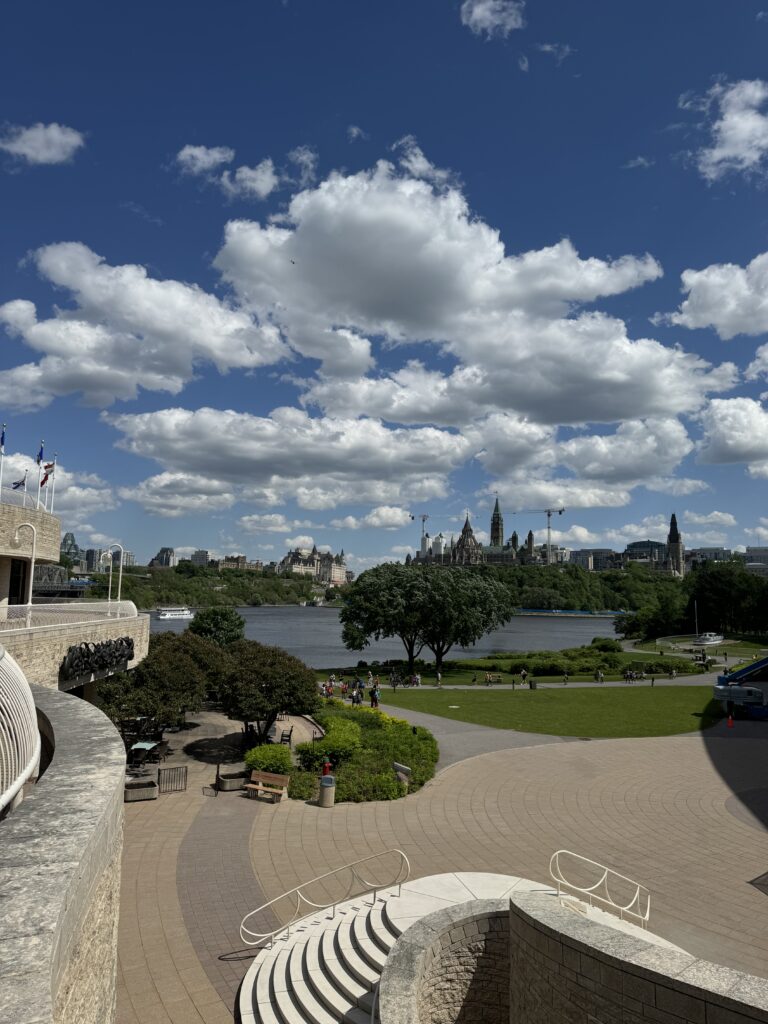
The best part of the Canadian Museum of History is its stunning view from the back. From here, you can see Parliament Hill across the Ottawa River. The spring blue sky, the river shimmering with reflections of the sun, and the towering spire of Parliament Hill create a spectacular scene, inviting you to visit the iconic parliament buildings up close.
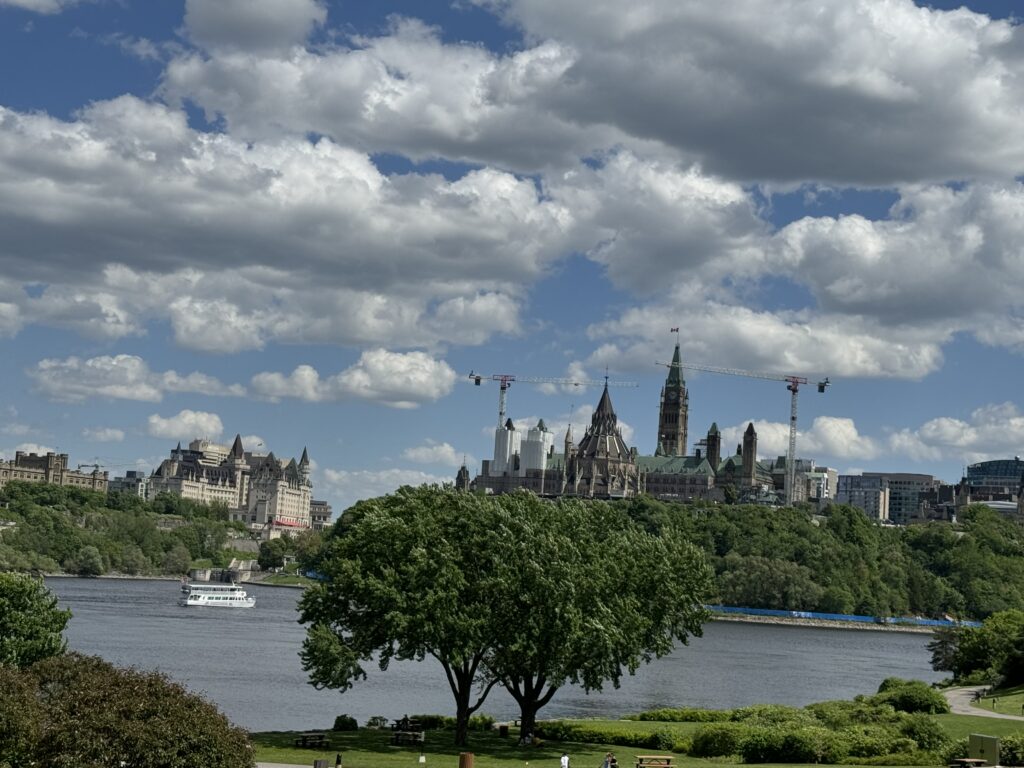
6. National War Memorial
As the sun gradually slid to the west, bringing the evening vibe, we arrived at the National War Memorial, known as The Response. This striking granite arch, adorned with bronze sculptures, stood before us, emanating a solemn and powerful presence.
Designed by Vernon March and dedicated by King George VI in 1939, the memorial was completed and installed on October 19, 1938. Towering atop the arch are two 5.33-metre-high allegorical figures representing peace and freedom. This monument commemorates the sacrifices of all Canadians who fought in wars throughout the 20th and 21st centuries. In front of the arch lies the Tomb of the Unknown Soldier, a poignant tribute to the unidentified soldiers who gave their lives in service to their country.
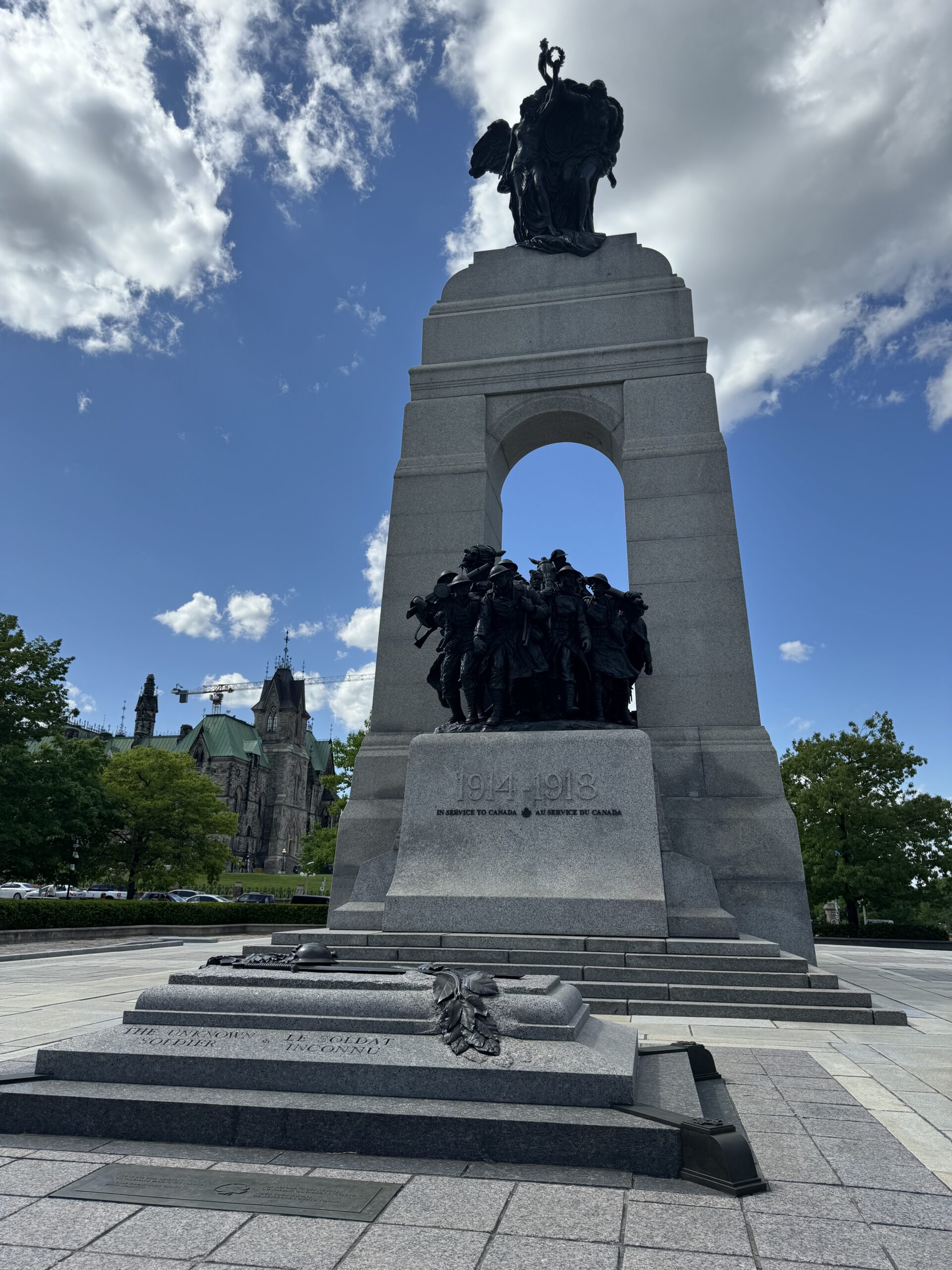
The National War Memorial, also known as The Response, powerfully commemorates fallen soldiers and those who fought in different eras through its four dimensions. On the north and south faces of the statuary base, the dates 1914–1918 mark the First World War, accompanied by the inscription “Service to Canada/Au service du Canada,” encompassing all Canadians who served in armed conflicts, past, present, and future. The east and west flanks of the base bear the dates 1939–1945 for the Second World War and 1950–1953 for the Korean War, respectively. Further, the east and west arch pier footings are inscribed with the years 1899–1902, representing the Second Boer War, and 2001–2014, denoting the War in Afghanistan. These engravings collectively honor the broad spectrum of Canadian military service across different historical periods, acknowledging the sacrifices made by soldiers in various conflicts.
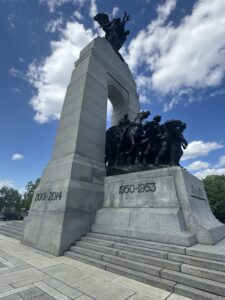
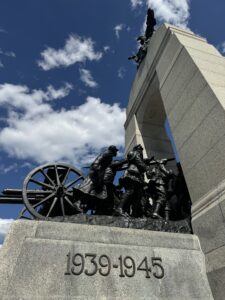
7. Parliament Hill


Within a five-minute walk from the War Memorial, the majestic Parliament building stands tall. Its East and West wings, along with the Centre Block and iconic clock tower, create the signature skyline of the capital city.
Even under construction, with much of it hidden, the Parliament building’s beauty still shone through the boundary walls.
This site features an array of Gothic revival buildings designed to reflect the rich heritage of parliamentary democracy. Serving as the center of Canada’s federal government, it is where representatives from all over the country convene to legislate on matters impacting Canadians. Beyond its political importance, Parliament Hill is a gathering spot for meetings, celebrations, and tourists, symbolizing the nation’s core. The establishment of the site began after Queen Victoria selected the town as the new capital in 1857, with construction of the Parliament Buildings starting in 1859.
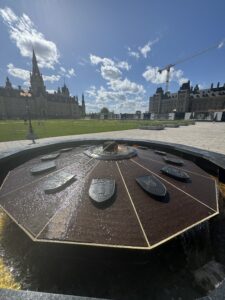
The Centennial Flame, which burns continuously in front of the Centre Block of Parliament, was first ignited on January 1, 1967, to commemorate the 100th anniversary of Confederation. It has since become a symbol of Canada and a popular gathering spot for visitors to Parliament Hill.
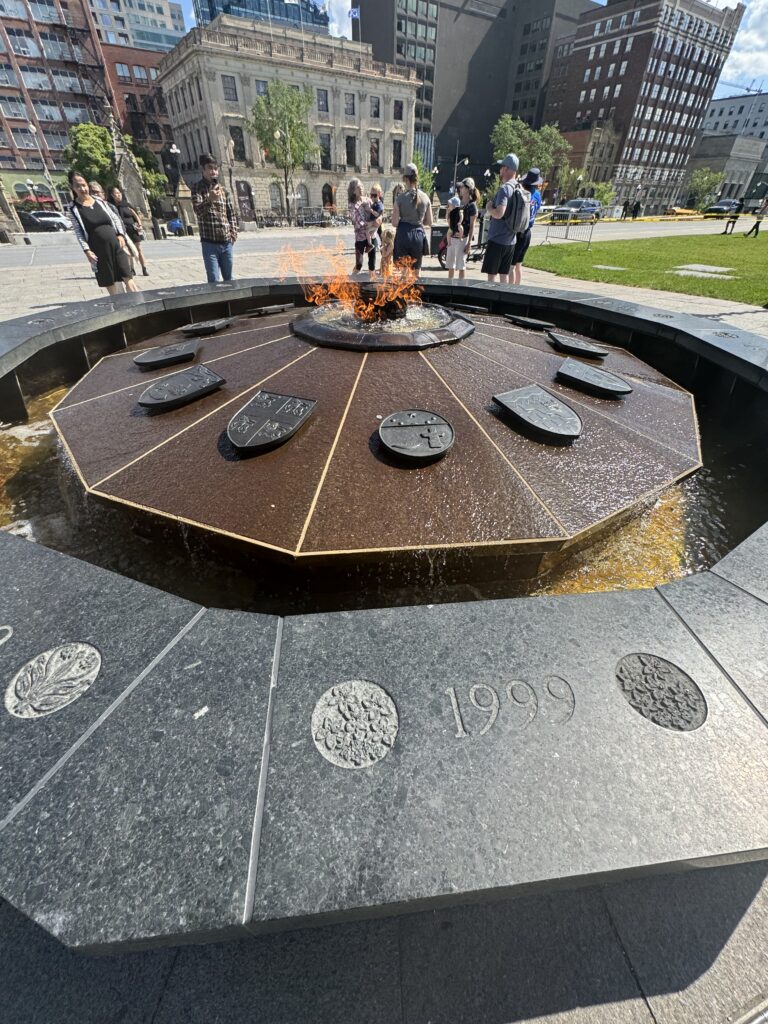
Parliament Hill is rich with historical significance, serving as a testament to Canada’s history of colonization and embodying the enduring connection between past events and contemporary political power.

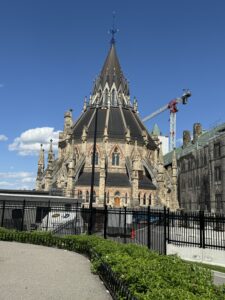
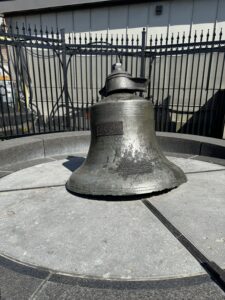
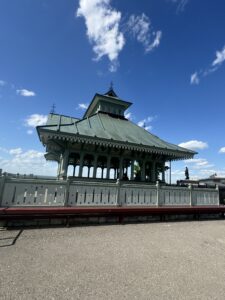
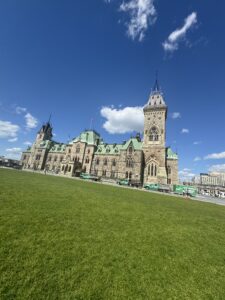
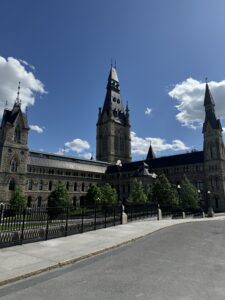
When you need a break after exploring Parliament Hill, relax and take in the scenic beauty of Gatineau across the Ottawa River. Enjoy the refreshing breeze coming off the water to help you unwind.
8. Rideau Canal
No tour of Ottawa is complete without a cruise on the Rideau Canal that stretches 202 kilometers, connecting the Ottawa River in Ottawa to the Cataraqui River and Lake Ontario in Kingston. Recognized as a UNESCO World Heritage Site, this canal, designed for steam-powered vessels, stands as one of the 19th century’s most remarkable engineering achievements.
During the warmer months, the canal’s scenic, green banks attract walkers, runners, in-line skaters, and cyclists. In winter, it transforms into a picturesque skating rink. Comprising 45 locks across various Ontario communities, the canal was initially constructed for military purposes, ensuring a secure supply and communication route between Montreal and Kingston.
From the boat, you’ll have a clear and stunning view of Ottawa’s skyline, especially as you return and approach Parliament Hill.

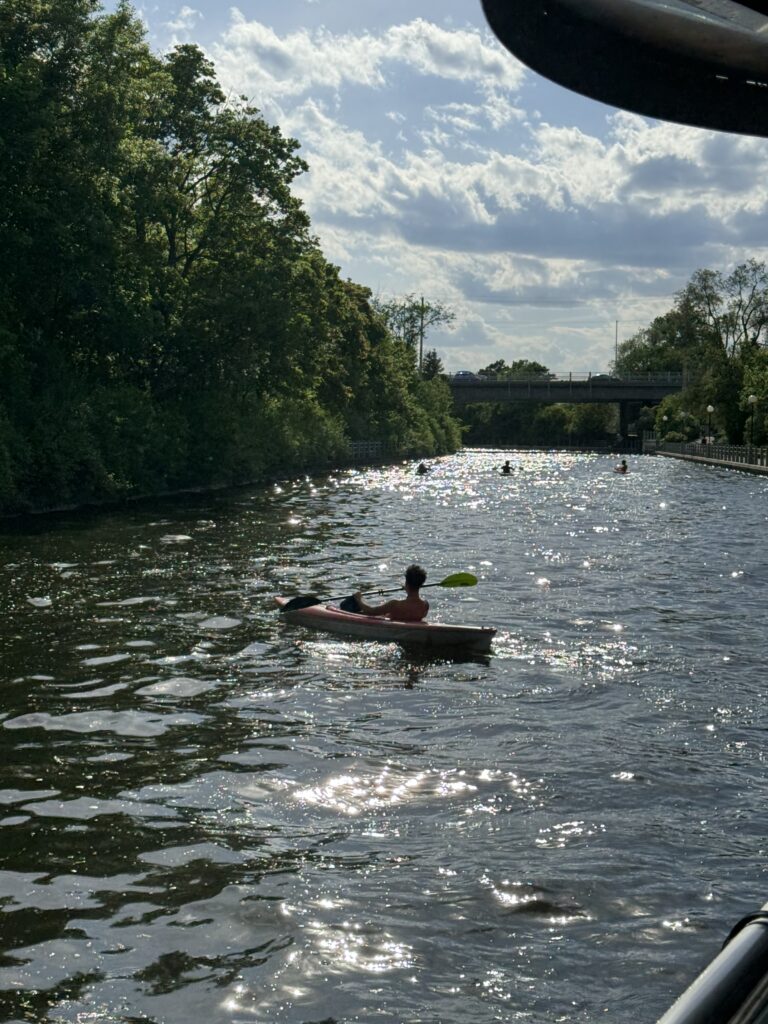
While cruising through the Canal and enjoying nature’s bounty, you might encounter canoe riders waving to greet you, highlighting how people connect in the natural setting.

Sit on either side of the boat and enjoy the melody of the water as you pass under bridges, taking in both man-made and natural landscapes. It’s an experience that creates lasting memories.
Most notable during the cruise are the many bridges with varied architectural designs, connecting the inhabitants on both sides of the canal.
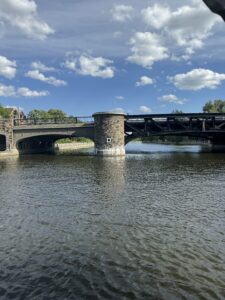
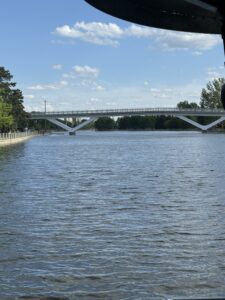
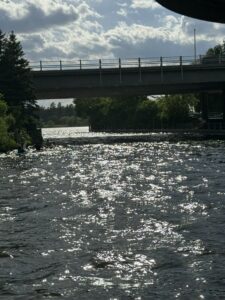
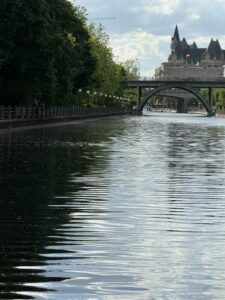
9. Canadian Tulip Festival
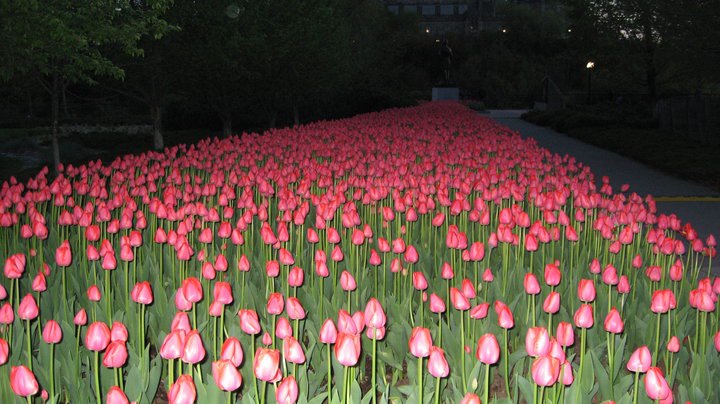
One of Ottawa’s most enchanting springtime events is the Canadian Tulip Festival. Each May, this vibrant celebration commemorates the historic gift of tulips from the Netherlands to Canada. Wandering through Commissioners Park at Dow’s Lake, you’ll find yourself immersed in a breathtaking sea of over a million tulips, each bloom contributing to a vivid tapestry of colors. It’s a scene of pure romance and natural beauty, perfect for capturing unforgettable moments with your camera. Here are a few snapshots of me enjoying the colorful company of these tulips.
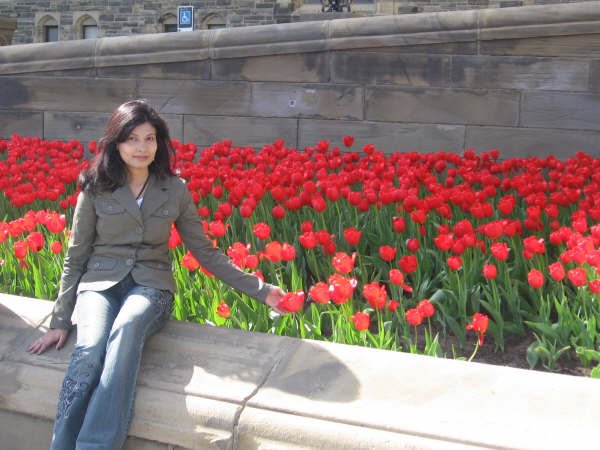
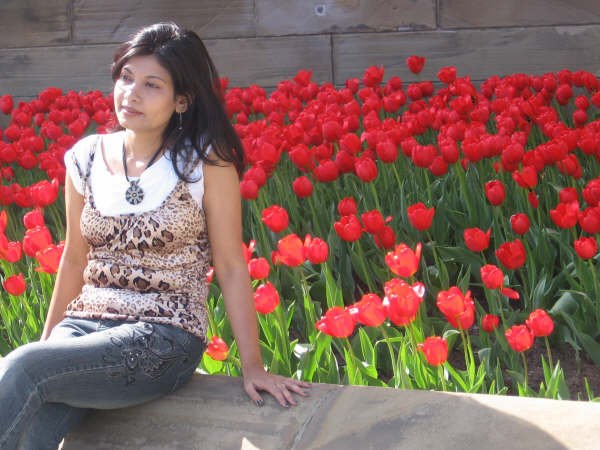
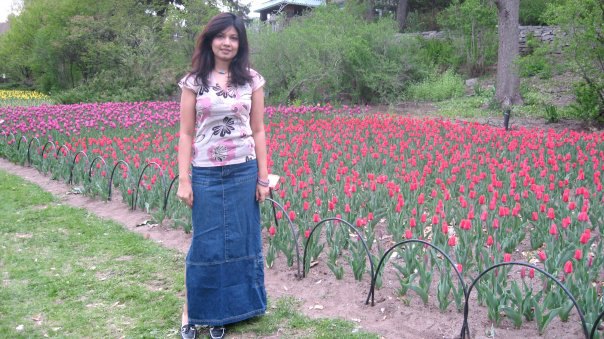
10. ByWard Market
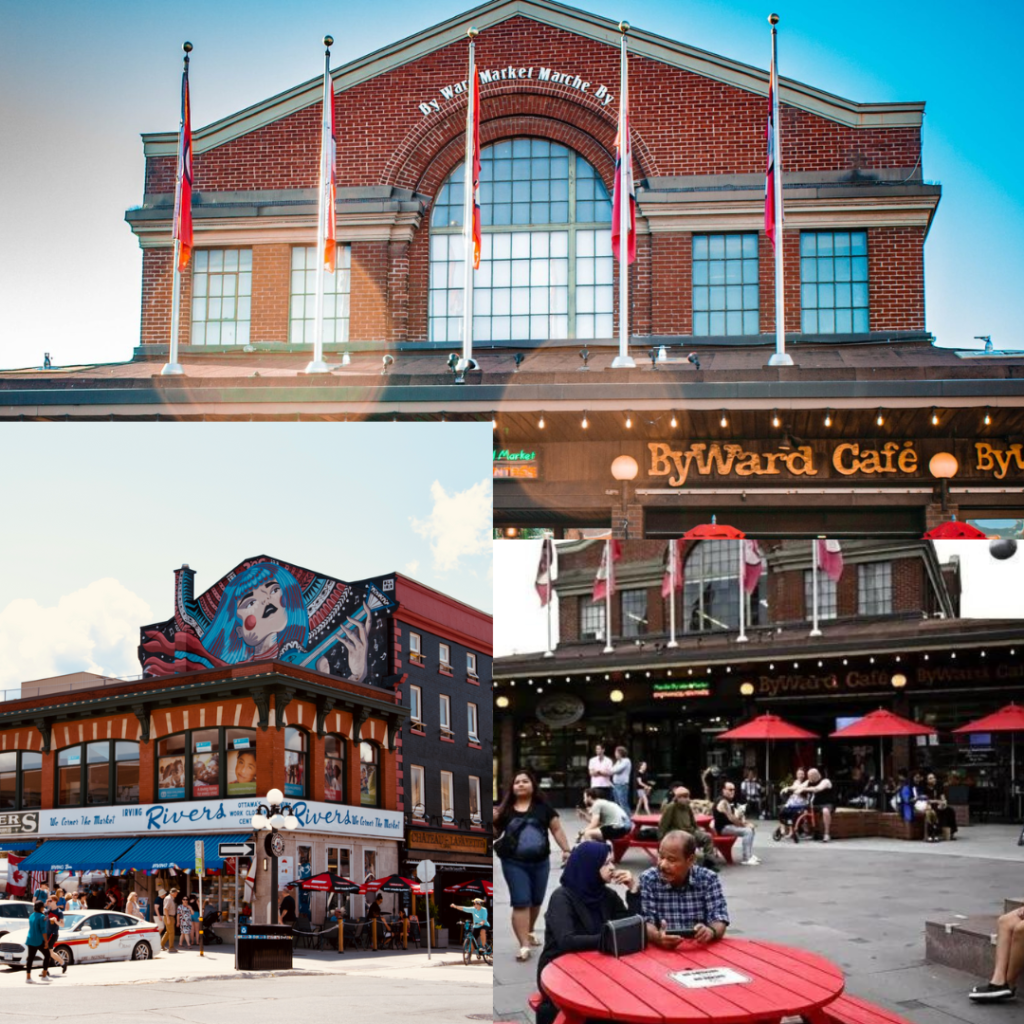
My final destination was the ByWard Market. Visiting this Market was an unforgettable experience. This lively hub is a paradise for tourists, with bustling outdoor farmers’ stalls and specialty shops offering delectable Canadian cheese and maple-infused chocolates.
The market’s charm is enhanced by vibrant street art and trendy boutiques showcasing crafts and fashion from local designers. I savored delicious shawarma and indulged in BeaverTails, those delightful sweet pastries shaped like a beaver’s tail. As night falls, the market transforms, offering a mix of rustic taverns and chic bars, perfect for a fun and stylish evening out.
Ottawa, Bye for Now
As I bid adieu to Ottawa, I’m filled with a sense of gratitude for the unforgettable experiences and cherished memories this city has bestowed upon me. From the historic landmarks like Parliament Hill and the Rideau Canal to the vibrant festivals and bustling markets like ByWard Market, each moment has been a testament to the richness of Ottawa’s culture and heritage.
As I reminisce about my journey through this vibrant capital, I’m filled with memories of the warmth of its people, the breathtaking beauty of springtime nature, and the delightful spirit and sweetness of my student guide. Until we meet again, Ottawa, thank you for the unforgettable moments.
